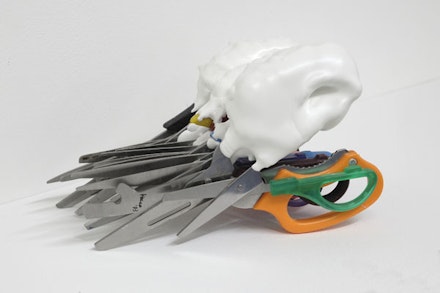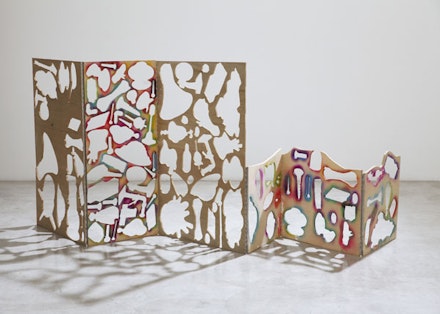Teppei Kaneuji is a Japanese artist based in Kyoto. His work has been shown throughout Japan and internationally at STPI in Singapore, Ullens Center for Contemporary Art in Beijing, Museum Haus Konstruktiv in Switzerland, State Hermitage Museum in Russia, and more. Kaneuji will have a solo show at Jane Lombard Gallery in New York in September 2015. www.teppeikaneuji.com
What new or old tools are you
attached to in your art practice?
I still get amazed by the most obvious of things—like how it is that a photograph actually works, how a plane flies, how a record makes music. In this way, a lot of things still seem “new” to me.
At the same time, I think that when things do cease to be new, when they deteriorate, their meaning changes, and, to me, this actually makes them more interesting. For example, the massive number of things and stories that accumulate everyday (the number of stories we tell grows everyday) or the way that random or shuffle functions can alter the order of things: printing, publishing, distribution, migration.
What tools have you rejected?

Besides the tools that I can’t use or that just aren’t appropriate for me, I try to incorporate everything. If anything, I see potential when things prove to be impractical, or when there is misunderstanding or rejection.
What I sense now is that I’m not making proper use of words or money, so I want to do something about that.
What have the tools
done to your art?
When I make an artwork I prioritize process and method, so that the object itself is simply something born from the process. Thus, in a sense, the work is itself the tool. The tools, materials, and artwork are interchangeable.
This sort of thing happens a lot, especially when I am making a work within certain confines. Byproducts resulting from the process of making artworks themselves become the templates for new artworks, or they may become two-dimensional artworks. Sometimes, before I know it, what had started as my tool is now suddenly part of my artwork.

When you examine the world through this model (in this I include things like arranging songs with days of the week in their titles to be played only on the days in question), then the meanings of context, purpose, value, and objects change. Things that were never supposed to meet, meet, and in the course of those processes new forms are born. The act of making these kinds of circumstances is closely related to my production style. Furthermore, the things and the ways I use them—including deliberate misuse and substitution—change depending on the circumstances, so there is no single tool that I can’t do without. The important thing is the unique circumstances or way of thinking. There is nothing that can be obtained with equal ease throughout the entire world, and it is through chance, substitution, and even misuse that the form and meaning of the artwork acquire their singularity.
